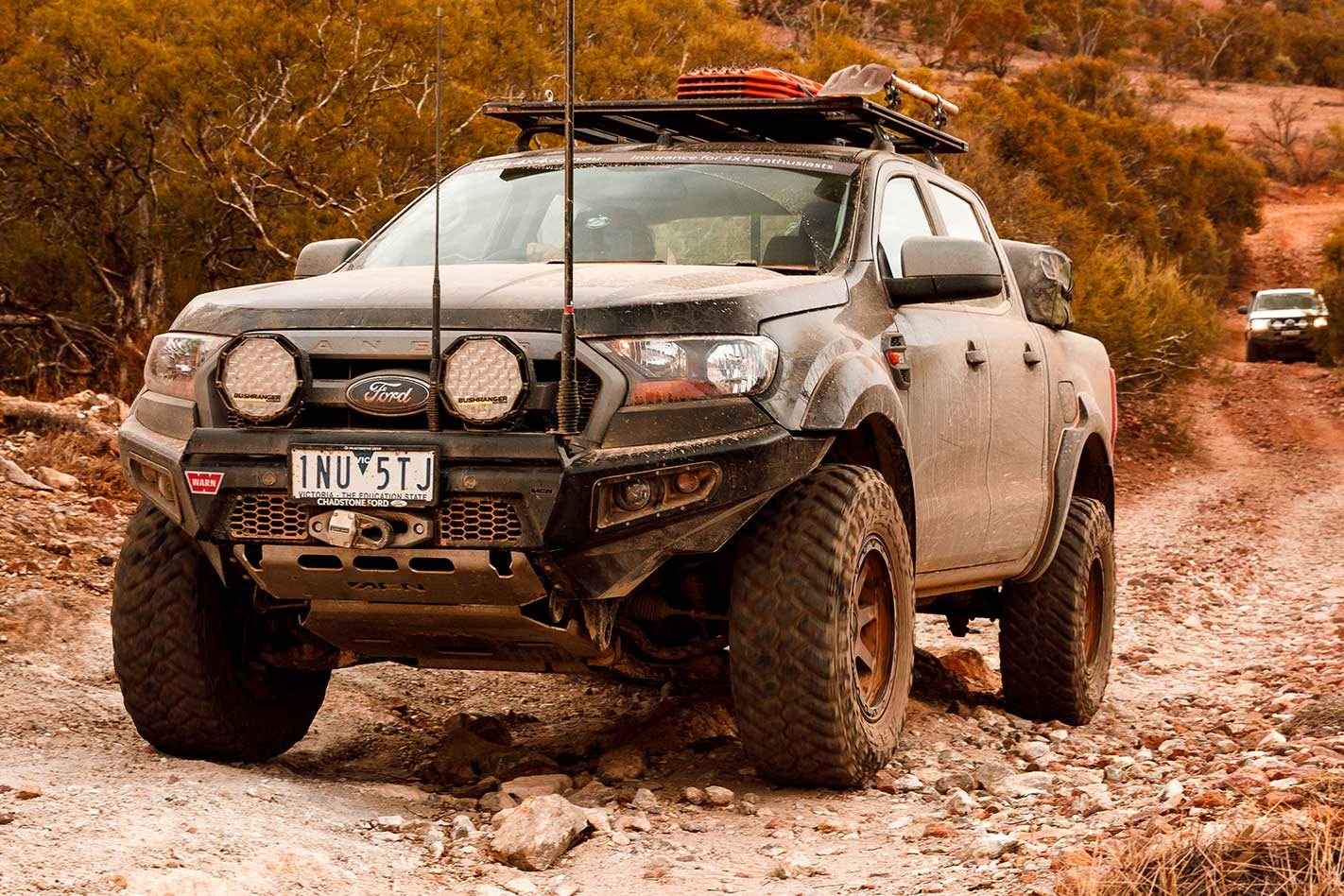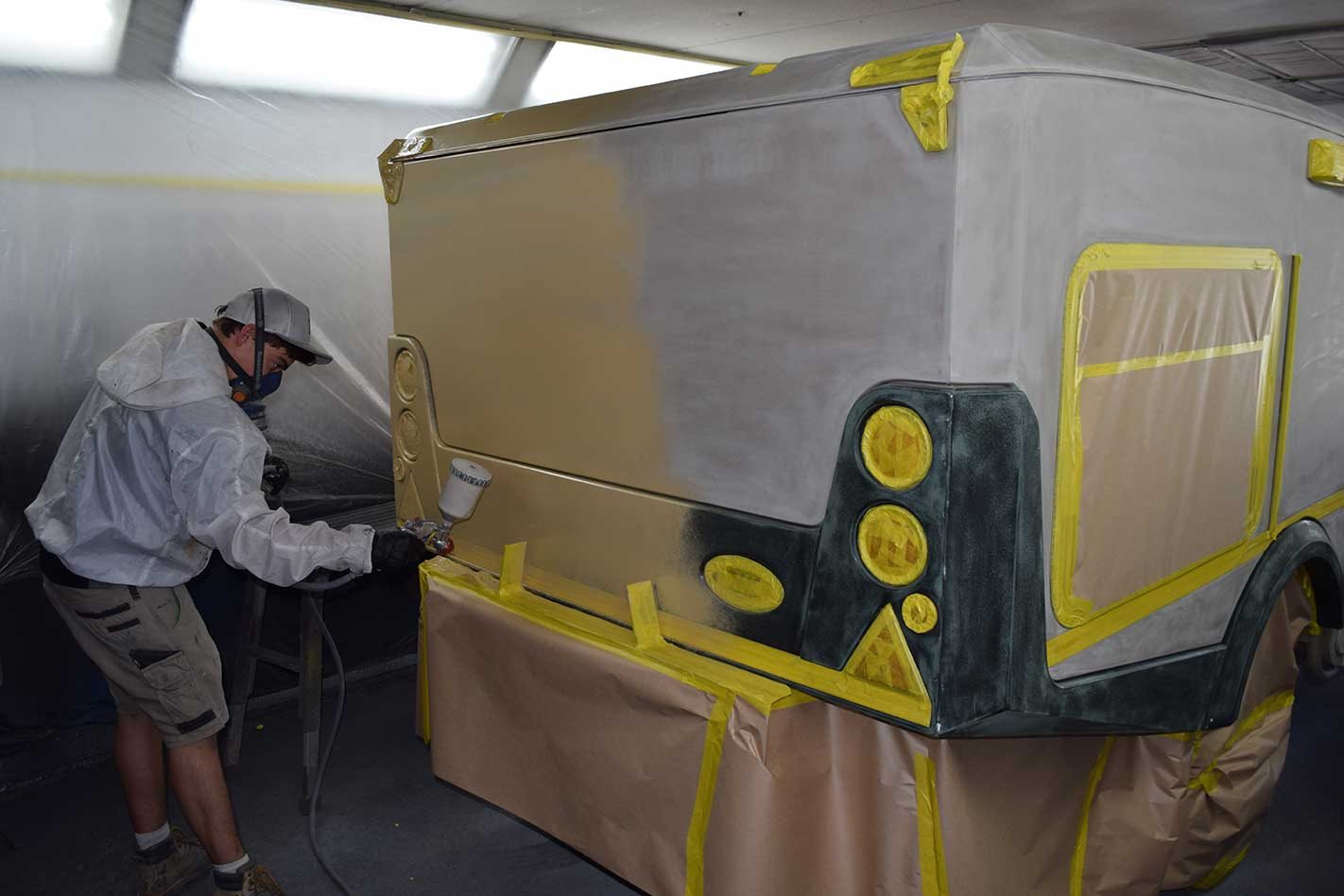When choosing the best bullbar, you look for something that’ll do the job, but a certain amount of opinion will always guide your choice of materials, bar type and fit and finish.
Do you want alloy or steel, hoop or post? Do you want it polished, colour-coded or plain black. Does it fit your vehicle?
When I saw Opposite Lock’s new 63mm-diameter, steel winch bar, combined with side rails and steps, I knew it was the best-looking bar I’d seen on a 70 Series Cruiser. It features tubing that’s larger in diameter than most bars, giving it a macho appearance. Plus, it perfectly fits the lines of the 70 Series.
Something I always look for is a driver’s-seat view of the bar’s extremities. You need to see where your bullbar is in order to pick your way through tree-lined tracks, negotiate rocky outcrops, as well as easily park in reverse, without nudging other vehicles. This OL bar has been manufactured to perfectly fit and provides impeccable driver visibility, without hindering forward view.
These days, most people want to fit the largest-diameter driving lights they can get their hands on. So having a bar with maximum vertical space available is an essential consideration. The gap in the Cruiser bar is about 29cm high, with no horizontal bars getting in the way.
Fitting the driving lights is easy via hand and spanner access within the main cross channel. The same access slot also grants easy operation of the electric winch clutch lever. I fitted an 11,000lb RUNVA winch, which perfectly fit within the Opposite Lock channel.
I opted for halogen fog lights. Flicking them on at night via the separate light switch returns an extremely wide and low beam of light. The LED turn indicators seem a little out of place, visually – a high-tech rectangular light contrasts with the old-school, round halogen fogs, but they do the job. Being LED, they did upset the timing of the blink to double-time, so I’ve had to install a blinker resistor to slow things down.
Opposite Lock’s bar is ADR compliant and airbag compatible.
I’ve ticked the extra’s box for side rails and side steps. The rails should help protect the panel work, and the steps replace the weak standard alloy units. I haven’t tested them yet, but I presume the side steps will be strong enough to use a hi-lift jack on. Having the slightly longer side step also helps passengers move in and out on the passenger side!
While fitting the side steps, the Opposite Lock crew advised me that the standard exhaust system should be modified to not foul on the fitting brackets. This fix was done temporarily and I’ll be sorting an aftermarket replacement exhaust soon.
The top loop of the OL bar features three slotted antennae tabs. I don’t need three antennae, but they allow for sand flags to be easily affixed. Plus, because the antennae are slotted, all wiring can be left intact during antennae installation and removal. While I haven’t mounted my driving lights, UHF antennae or flags to the Troopy yet, it’ll be a quick and easy job.
I’ll not be buying larger-diameter lights to fill the void. The 208mm-diameter Fyrlyt halogens that were removed from the 100 Series will be gracing the Troopy’s new bar. They’re the best lights I’ve driven with and I’ll stick with them.
One problem with the OL design is the lack of built-in recovery points. There are many aftermarket options that can be added directly to the chassis, but it would be nice to have them included as standard.
The steel, large-diameter, post-style bullbar perfectly sets off the 70 Series range and is the ideal mounting point for electric winches, driving lights, antennae and flags.
Rated
Available from: www.oppositelock.com.au RRP: Varies depending on vehicle model. We say: Most rugged-looking barwork available.





